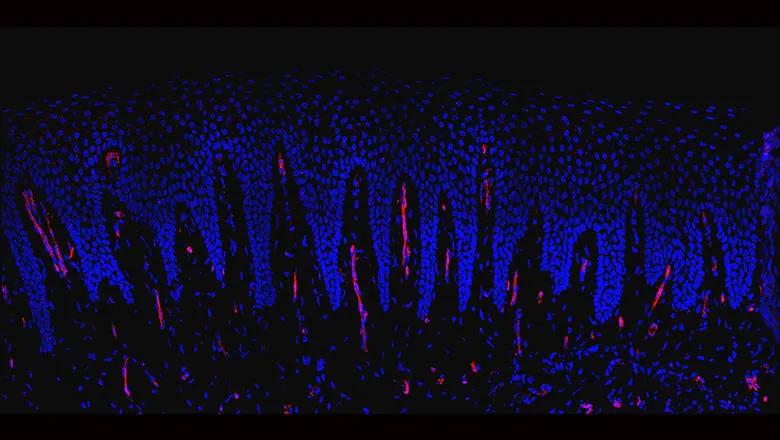06 January 2021
Decoding the human gingiva cell by cell
Researchers from the Centre for Craniofacial & Regenerative Biology at King’s College London have published the first cellular characterisation of the human gingiva using single-cell RNA sequencing.

Recently published in eLife, the work identified novel subtypes of gingival cells and their molecular signatures, which reveals new principles for gingiva homeostasis and the response to periodontitis, extending the knowledge of this disease.
The mucosal barrier surrounding the teeth (gingiva) actively contributes to immune responses and immunotolerance. Such functions are reflected in the diversity of cell types that constitute the human gingiva. In a landmark study, Ana Caetano and Val Yianni from Professor Paul Sharpe’s research group at the Faculty of Dentistry, Oral & Craniofacial Sciences analysed over 12,000 human gingival cells from healthy and patients with periodontitis. The project was in collaboration with Dr Veronica Booth and Dr Pegah Pasha from the Periodontology Department at King’s College London and colleagues from Unilever Ltd.
The analyses revealed a diversity of 16 cell types: epithelial, stromal, endothelial and immune cells. Most interestingly, this study revealed how these cell populations progress from health to disease and uncovered molecularly distinct subpopulations of epithelial and stromal cells. Using transcriptional diversity to predict developmental potential, this study identified a novel mesenchymal population characterised by AEBP1 expression. Finally, they predicted the association of specific cell types using a bioinformatics approach evaluating the expression of cellular receptors and their ligands.
This study raises intriguing questions about the role of certain cell types in response to periodontitis. Investigating how exactly these specific cells engage in health and disease, through single-cell sequencing approaches, is sure to extend the knowledge of oral biology even further.
Taken together, the transcriptome of each cell population and candidate interacting cells provide an invaluable blueprint for future studies aimed at deciphering the role of specific gingival cells that contribute to homeostasis and periodontitis.
These exciting findings raise the possibility that clinical strategies might be developed by the discovery of both new drug and cell targets. Such approaches might one day provide treatment options not just for periodontitis, but for the wide range of chronic inflammatory diseases.



